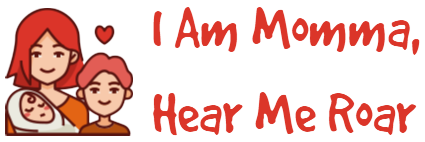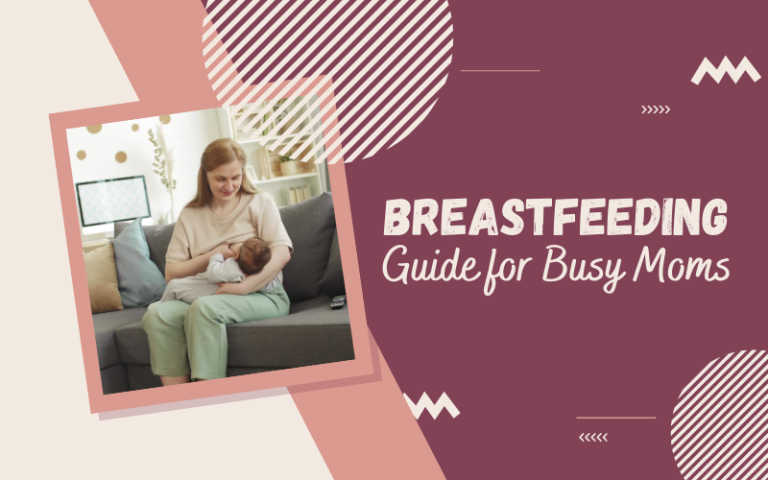Looking for breastfeeding help for new moms? You are on the right page!
As a new breastfeeding mother, there are a lot of new experiences you’ll go through.
And the best way of welcoming these experiences is to understand them before they arrive.
This will help calm your nerves when the real thing occurs. And you can give your baby the best feeding experience without feeling overwhelmed.
To help you on this journey and ensure your breastfeeding is smooth, here are a few things you should keep in mind.
Sore Nipples when Breastfeeding
Moms, especially first-timers, face the problem of their nipples becoming sore or cracked due to nursing at some time or the other.
It takes some time to get the knack of overcoming and prevent this condition altogether. This section of the article provides some tidbits on how and suggests techniques of solving the problem if it occurs.
The majority of the time, nipples become sore because the child has not latched on properly.
Is your baby holding just the nipple in its mouth? Then you need to coax the child to latch on to the areola, instead of the nipple alone.
Observe the kid’s lips closely. Does it suck with its lips turned inwards? This creates a biting sensation at the nipples.
Tickling below its chin will make the child curl its lips outwards, and ease the pressure on the nipples.
Some mothers have the habit of washing their breasts frequently and all too excessively. This is not required. Especially taboo is the tendency to apply soap on the nipples.
In the first few weeks, the nipples are a little tender, and can definitely do without such harsh treatment. After every feeding, let the breasts air dry for about ten minutes.
During the entire nursing period, it would be prudent to skip those tight-fitting bras made of synthetic material; and instead, wear a loose-fitting cotton bra at all times. This helps alleviate the soreness problem to a great extent.
Before You Start Feeding
Before starting the feeding, try expressing some milk by hand. This softens the areolas and prepares them for the suction process ahead.
While the feeding is going on, gently massage the breast, so that the nipple tissues do not get stiff. Do not try to rush through the process.
Let the baby get its fill to its heart’s content. If, after the baby is through, you continue to have a feeling of fullness in the breast, it might be best to express the milk by using breast pumps and storing for later use.
This helps in the breasts not becoming engorged.
After Feeding

After the feeding is over, the child should be gently weaned away from the breast. For this purpose, put your fingertip at the corner of the baby’s mouth. Gently move the child away.
After several rounds of doing this consistently, the baby begins to understand; and lets go of the nipple without causing any harm.
The nurse frequently before the child is overly hungry. A very hungry child tends to pull at the nipples aggressively, leading to injury and soreness.
A correct posture while feeding is very important. Both you and the child should be as comfortable as possible during this time.
An incorrect posture might cause tugging at the breast tissues, which could be harmful in the long run. Also, keep changing the nursing position in a session.
Lanolin and Vitamin E oils are quite popular amongst moms facing cracked nipples recurrently.
These oils have a soothing effect on the nipple skin. While quite harmless on their own, it would be prudent to wash them off before feeding the baby.
Conclusion
Sore nipples should be treated to packs of crushed ice after each feeding. The cooling effect relaxes and heals the nipple skin to a great extent.
Breast shields are available in the market for cupping the breasts in such a way, that air circulates around the nipples at all times. This continued exposure to air to clears the soreness.
A sore nipple that refuses to ease is best shown to a medical worker or doctor for advice. Also, ensure that there is no mastitis in the breasts.
Help with Inverted & Flat nipples

There is a subtle difference between a “flat” nipple and an “inverted” nipple. A “flat” nipple is one that does not protrude or become erect through stimulation – it simply stays put.
An “inverted” nipple actually retracts, rather than protrudes, when stimulated. Mothers – especially first-timers – with doubt about their condition can try out this simple exercise – simply compress the areola (the darker portion surrounding the nipples) between the thumb and the forefinger.
The degree of protrusion will tell you the difference. It is not unusual to discover that one of the two nipples only is flat or inverted, while the other is normal.
There used to be a time when medical opinion sought to mentally prepare moms with such issues at the prenatal stage itself.
Exercises used to be suggested that would revert this condition, and/or devices – such as breast shells and bra cups – were worn throughout the day.
However, it has been observed that the mothers, with all this attention being given to their breasts, started feeling inadequate, and rather than adjusting with their condition, set themselves up for breastfeeding failure.
The point that mothers should bear in mind when faced with this condition is that babies do not suckle at the nipples – they suckle at the areolas. Nipples simply act as props for drawing the milk out and assist in nursing.
Whether your condition makes no difference to the baby’s nursing, or it is indeed acting as an impediment, will only become known when you actually try to nurse the baby.
In some cases, babies instinctively latch on to the areola – whether inverted/flat or not. In cases where nursing “does” become difficult, tried and tested techniques can be deployed to help smoothen the process.
Tested and Tried Techniques
One such technique is to now deploy breast shells or bra cups – the ones that were made use of in the prenatal stage.
These shells apply gentle and continuous pressure on the areola, with the objective of easing up the adhesions beneath the skin that are holding the nipple back.
These shells can be worn for up to thirty minutes prior to each feeding to help draw out the nipple even more. It should be borne in mind, that these devices are not to be worn while sleeping.
Further, it is possible that milk starts getting expressed in these shells, especially when the breasts are full. Such milk should be discarded, and not used.
Breast Pumps As a Solution
Breastpumps are also an effective device that performs the same function of loosening the adhesions beneath the skin that are preventing the nipples from protruding.
Since breast pumps are ergonomically designed, the loosening action is uniformly carried out around the areola.
Hospital-grade breast pumps draw out milk from full and engorged breasts quite efficiently – which is their main function, incidentally – and help store them in clean and hygienic containers that can be later bottle-fed to the child.
In extreme cases where the child is simply not able to latch on to the breasts at all – a breast pump is an ideal solution.
They are especially a boon for cases where the mother’s breasts become engorged quite frequently, but an inverted or flat nipple prevents the child from having access to the milk stored in them.
Surgery and breastfeeding

A mother may have to undergo surgery for various reasons, which may have an impact on her
breastfeeding performance (also known in medical parlance as “lactation insufficiency”).
Depending on the severity of the surgery, a mother may continue to breastfeed her child or may have to deploy breast pumps or take recourse to formula milk. The same is true when the child has to undergo some surgical procedure.
This article looks at the various circumstances when such surgeries are carried out, and their impact on child nursing.
Breast Reduction
Some mothers undergo surgery for the purpose of breast reduction, known as Breast Reduction Mammoplasty.
Here, excess glandular tissue and fat present in the breast is removed, while retaining intact the blood supply and sensation in the remaining tissue.
Depending on the briefing the mother has given to the doctor about the surgical sculpting to be carried out on her breasts, an appropriate amount of tissue known as Pedicle Flaps are moved.
Post-surgery, the amount of remaining milk-producing gland, the quality of preservation of gland attachments to the nipple, and sensation issues together decide how well the mother is capable of breastfeeding.
In extreme cases, when massive mammoplasty has to be carried out, the nipple and areola are disconnected from the underlying gland, nerves and blood vessels.
In such a case, breastfeeding is quite difficult, if not impossible.
Child Surgery
There are occasions when the baby has to undergo surgery or some sort of hospitalization for a limited or prolonged period.
In such a situation, breastfeeding has to stop for some time before, during, and after surgery.
An empty stomach is more comfortable for the child than going to the operation table. Because the injection of anesthetic into it can induce nausea and vomiting if the child has been recently breastfed.
This is something that the mother should consult with the physician performing the surgery.
There is a need for consulting the physician to know the appropriate time for resuming breastfeeding, “after the surgery is over.
If this will result in the mother skipping one or more nursing sessions, it might be wise to make use of a breast pump to express the milk during this time. Then store it for later use.
This helps in preventing engorgement problems and there is equally a continuous supply of milk.
When breastfeeding becomes unfeasible, indeed risky
For quite a few generations, it has been a well-known and established fact that breastfeeding a child is infinitely superior overfeeding it with formula milk.
The complex foods that the child gets through nursed milk is still a mystery for science, which no amount of formulations have been able to replicate.
Couple this with the warmth and love the child receives, while snuggled against the full breasts.
And one can appreciate the amount of care and bonding that nature has very carefully built up around the two, which is so very crucial for the normal and healthy growth of the child.
There are, however, situations – medical in nature – when breastfeeding is not feasible. Try as the mother does, it would be indeed risky for either the child or the mother, or both of them, to indulge in this activity.
This section of the article takes a look at the various situations when this is so.
Transmission of HIV During Breastfeeding
The first situation that immediately draws attention is the transmission of HIV from mother to child during breastfeeding (MTCT).
HIV-positive mothers have infected cells present in their breast milk. The stage of the HIV condition that the mother is in, determines the intensity with which MTCT can occur.
There are conditions that doctors refer to as “high viral load” or “low CD4 cell count”; besides Vitamin A deficiency, which, if present in the mother, immediately increases the risk of the child getting HIV.
In such a situation, it is indeed best for the mother to go in for formula milk.
The same is the case when a malignant or cancerous tumor has been detected.
Any radioactive isotope testing or radiation therapy or chemotherapy always leaves room for the possibility of harmful elements passing to the child. However, cancerous cells do not pass through breast milk.
A Breastfeeding Mother and Herpes
A mother suffering from Herpes (HSV-1, or Simplex Type 1) has cold sores or blisters around the mouth, and other parts of the body, usually above the waist.
This condition is infectious, and since the child’s immune system is still in the development stage, the probability of the virus entering the child’s body is quite high; even though it is not present in the milk.
In such a situation, the mother may employ a breast pump to nurse milk, while being careful at all times that the liquid does not come in contact with the sores in any way.
Sometimes, lumps form in the breasts of mothers, requiring a probe through a biopsy. These days, biopsies are surgery-free; since a hollow needle is all that it takes to remove a tiny piece of the lump for biopsy.
If however, the lumps need removing through an incision, it might cause milk ducts to sever. And the extent of this would determine whether nursing would be possible.
In such a condition, the mother has to rely on the other breast that is normal, to carry out breastfeeding.
Diabetic Mothers
Mothers who are diabetic (Mellitus, type 1 and 2), usually deliver a premature baby. The child has already adjusted to the mother’s glucose imbalance while in utero.
Both these situations enable the child to get a healthy diet through breast milk. Gestational diabetes – the kind that erupts in some mothers during pregnancy – is only temporary, and vanishes after delivery.
Breastfeeding in this situation is definitely feasible; the only care required is for the mother to monitor her diet and lifestyle extra carefully during the nursing period.
A few mothers have flat nipples that do not protrude when stimulated. This can prove to be difficult for the child to latch on. There is a reverse situation, where the nipples actually retract or pull inward when suckled.
This inversion at times becomes more pronounced when the breasts become full.
Nipple stimulants in the form of breast shields are available for both the situations; and doctors advise specific exercises that can help alleviate the condition.
Concluding Remarks
From the various situations described above, we can infer that, despite the best possible intention of feeding our child with nature’s bounty of diet, other medical conditions can and do come in the way.
In such circumstances, the only course of action might be to either go in for breast pumping or use formula milk.

